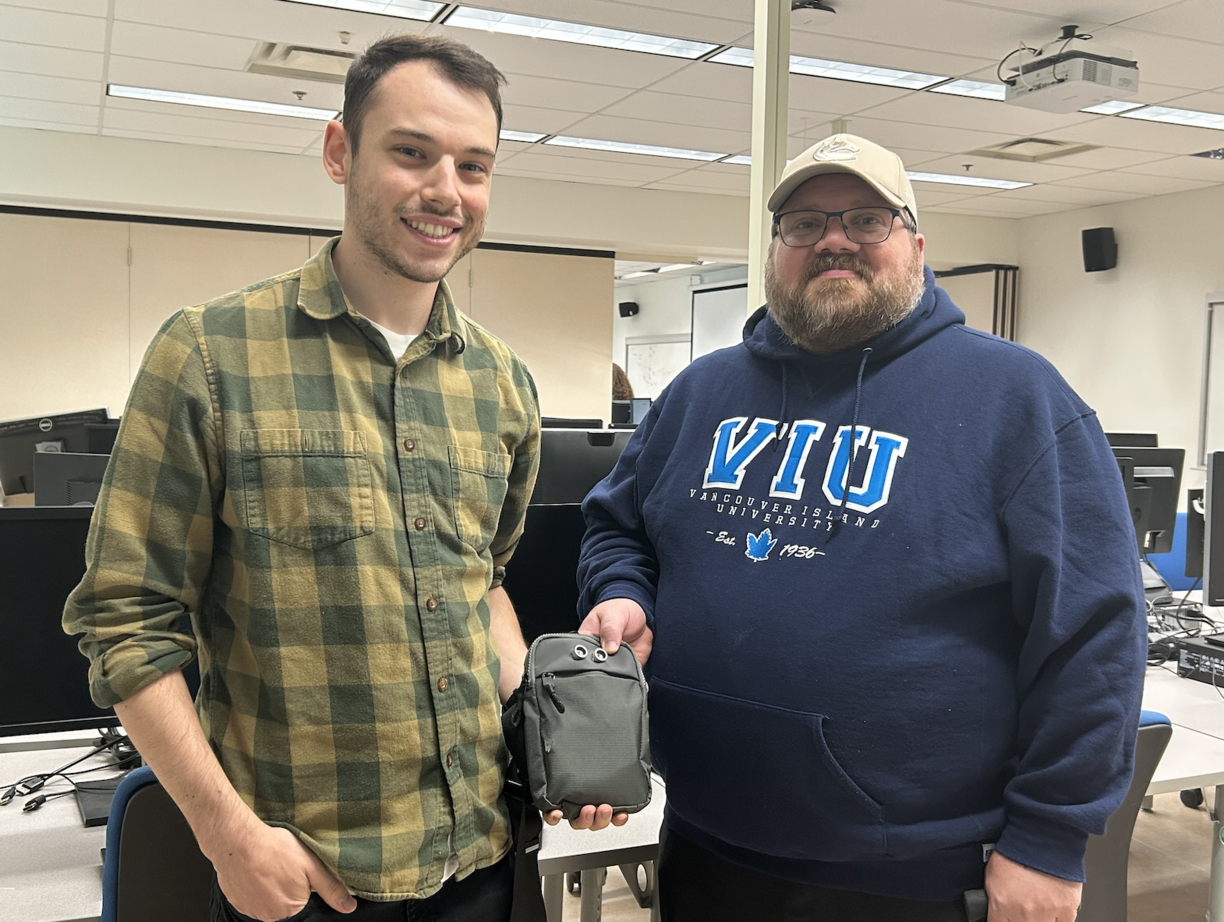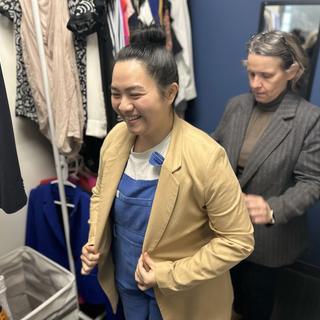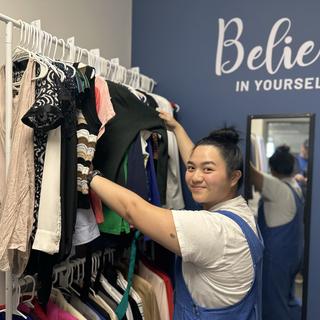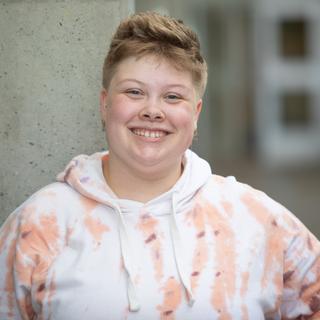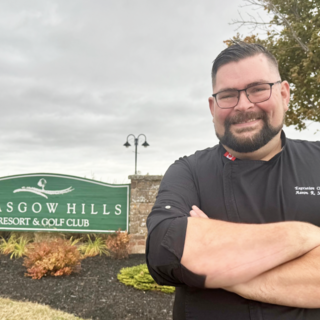Jack Redberger and Jay Koidhis with their first prototype of The Proximity Pal.
Photo: Vancouver Island University
The device is worn across the chest and is meant to act as an early warning system.
Students at Vancouver Island University (VIU) have designed a device to help people with visual impairments move about more safely and independently.
The Proximity Pal is a small device that is worn across the chest. It contains a microprocessor, sensor, vibration motors and a battery. When something is about 1.5 metres away, the device starts to vibrate.
“The vibration increases in strength as objects get closer,” said Jack Redberger, an Information Technology and Applied Systems (ITAS) student who came up with the idea as part of a class project. “It’s meant to act as an early warning system.”
“It’s like giving someone an extra sense,” added Jay Koidhis, who is helping Redberger design a second prototype, with the goal of making it feasible to bring to market.
Redberger got the idea for the Proximity Pal after watching a documentary about blind people navigating big cities.
“A blind person talked about scaffolding in New York and how they often couldn’t avoid it because their cane didn’t reach high enough,” he said. “That really stuck with me and I thought, ‘What if we could help detect obstacles above the waist?’”
Creating the device was not without its challenges. Redberger and Koidhis had to learn how to connect software and hardware to make it work properly.
“Getting the devices to talk to each other was the hardest part,” Koidhis said.
Currently, the pair are on a second version of the Proximity Pal. They’re replacing the ultrasonic sensor with LIDAR, which gives more accurate readings, and redesigning the power system to make the device smaller, lighter and longer lasting.
The project has also caught the attention of the Canadian National Institute for the Blind, which will test the product and provide feedback to Redberger and Koidhis.
The pair credits the ITAS program for giving them the tools and support they need to make the project happen.
“It started as a class assignment,” said Koidhis. “But with support from our instructors –especially Allan McDonald – we’ve taken it way further than we expected.”
Both students “exemplify what experiential learning in the program is all about,” said McDonald. “The program encourages student growth not only through academic understanding but also by providing opportunities to address real-world problems and develop viable solutions using technology.”
Redberger received the Lloyd Milburn Innovation Award, which is given to students from VIU and the University of Victoria who are tackling real-world health and equity challenges. The funding will help develop the second prototype.
The award gives students access to startup mentorship as well as programming and resources provided by the UVic Innovation Centre.
“I was surprised and really grateful to get the award,” said Redberger. “It showed me that this idea could actually help people.”
Both Redberger and Koidhis plan to continue working in technology after they graduate. Redberger hopes to find a job in systems administration, while Koidhis is aiming to return to the IT field, ideally with a local government or education office.
-30-
MEDIA CONTACT:
Eric Zimmer, Communications Officer, Vancouver Island University
P: 250.618.7296 | E: Eric.Zimmer@viu.ca |W: news.viu.ca
The VIU community acknowledges and thanks the Snuneymuxw, Quw’utsun, Tla’amin, Snaw-naw-as and Qualicum First Nation on whose traditional lands we teach, learn, research, live and share knowledge.

